What's New
Displaying results 4731 - 4740 of 4914
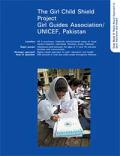
Resource | Publications,
In 1997, after several years of informal co-operation and following the development and testing of a pilot program, the Pakistan Girl Guides Association (PGGA) and UNICEF launched a Girl Child Shield Project. The goal of this project is to improve the status of women and girl children in Pakistan. By May 2001, the project had involved an estimated 100,000 girls in over 800 schools in lower and middle income urban and rural communities, trained them as role models on girl child issues, child rights, affirmative communication and team building. It had also reached an impressive number of peers (1,000,000) and families (100,000).
The overall goal of the project is to improve the status of girls and women in Pakistan. It seeks to increase the Girl Guides' awareness of the problems girls face in their communities, raise their self esteem, confidence, communication skills and increase their ability to engage in community service. The acquisition of new knowledge and skills by girls is intended to demonstrate to peers, families and communities the potential of girls and their abilities to act as role models and change agents, and thus to positively influence attitudes towards girls and reduce gender discrimination.
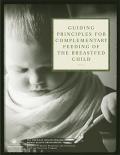
Resource | Guidelines,
The guidelines described herein were developed from discussions at several technical consultations and documents on complementary feeding (WHO/UNICEF, 1998; WHO/UNICEF Technical Consultation on Infant and Young Child Feeding, 2000; WHO Global Consultation on Complementary Feeding, 2001; Academy for Educational Development, 1997; Dewey and Brown, 2002). The target group for these guidelines is breastfed children during the first two years of life. This document does not cover specific feeding recommendations for non-breastfed children, although many of the guidelines are also appropriate for such children (except for the recommendations regarding meal frequency and nutrient content of complementary foods).
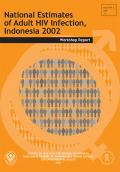
Resource | Publications,
One method to obtain an accurate information on number of HIV cases is to do an estimation by using available data. Therefore, in 2002 the Indonesian Ministry of Health, with ASA/FHI/USAID conducted a National Estimates of Adult HIV Infection. Those estimates were a great step to estimate the magnitude of burden diseases in the future. The results for conducting reliable estimates could be used into further development of policies and programs related to HIV/AIDS problems.

Resource | Fact Sheets,
Globally, the HIV sentinel surveillance system has been recognised as an optimal mechanism to monitor trends of HIV infection in specific high-risk groups as well as low risk groups. In India, high-risk groups of population include patients attending STD clinics, MSM clinics and drug de-addiction centres while mothers attendingantenatal clinics are regarded as a proxy for the general population. The rationale of choosing sentinel sites in these clinics is that the samples from the respective risk groups, attending these clinic-based settings could be collected at regular intervals. The whole procedure is “Unlinked Anonymous”. The frequency of collection of samples is once every year, during August to October
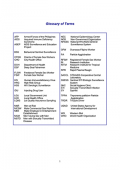
Resource | Publications,
The 2003 Technical Report provides the facts and figures gathered by the National HIV/AIDS Sentinel Surveillance System (NHSSS) from 1993. It includes data from the AIDS Registry, the Serologic Surveillance and the Behavioral Surveillance. This report also features the data from the newly setup Sentinel STI Etiologic Surveillance System.
To keep track of the epidemiology of HIV/AIDS in the Philippines, the Department of Health (DOH) established passive and active surveillance systems. The passive surveillance system, the HIV/AIDS Registry, was established in 1987. It continuously logged Western Blot-confirmed HIV cases reported by hospitals, laboratories, blood banks and clinics.
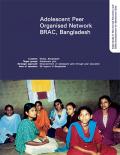
Resource | Publications,
The Adolescent Peer Organised Network (APON) project grew out of a large Bangladesh Rural Advancement Committee (BRAC) programme aimed at providing basic education to underprivileged children, especially girls, who have not previously attended primary school.

Resource | Publications,
Sri Lanka, with a population of 19 million, had a relatively small number of HIV-infected people—about 4,800 adults and children—as of the end of 2002, according to UNAIDS. Since 1986, only 415 cases have been officially reported, however, with underreporting due mainly to limited availability of counseling and testing and a prevailing fear of facing social stigma after being identified as HIV positive. The HIV infection rate among adults between the ages of 15 and 49 is estimated by UNAIDS to be less than 0.1 percent.
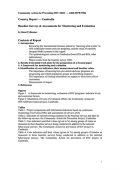
Resource | Publications,
National HIV/AIDS programmes world wide comprise a variety of interventions or actions aimed at reducing spread of HIV, providing care & support to the affected and alleviating socio-economic and human impact. Resources are always limited, and being able to decide which interventions are most appropriate and cost-effective (and thus to be given highest priority) is of critical importance. Different types of trials or operational research have been used to demonstrate effects of a given intervention conducted in a particular setting (efficacy).
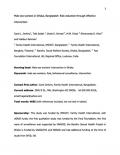
Resource | Publications,
Male sex workers (MSWs) comprise an important group at risk of HIV infection in South Asia. There are few published studies about their HIV or STD prevalence, numbers, socio-demographic characteristics or risk behaviors, although there is a growing literature on the more general category of men who have sex with men (MSM) in South Asia. Most published studies are concerned with describing behavioural risk and issues of identity and gender, but we have found none that evaluates or describes HIV prevention interventions. In Bangladesh, however, considerable progress has been made in research, prevention, HIV/syphilis and behavioral surveillance surveys (BSS) among MSM in general and among MSWs in particular. BSS are repeated quantitative surveys carried out in specific populations to track changes in the frequency of behavioural risk factors associated with the spread of HIV infection. The methodology of BSS is semi-standardized and allows comparison across countries and between samples within a country. Probability sampling, once established in sentinel populations, permits comparisons across years and can examine the effects of exposure to an intervention or to a package of interventions in a particular location.
Data from the Bangladesh behavioural surveillance demonstrate the impact of a behavioural intervention on MSWs in Dhaka. Nonetheless, overall condom use remains low. MSWs in Bangladesh remain at high risk in an environment with high levels of syphilis, but continuing low HIV prevalence.
This paper presents selected results of several studies on MSWs in Dhaka, Bangladesh conducted between 1998 and 2000.
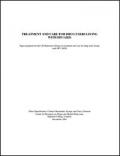
Resource | Publications,
This report has been prepared in October-April 2004 by the Centre for Research on Drugs and Health Behaviours at Imperial College on behalf of the UN Reference on HIV/AIDS prevention and care among IDUs in developing and transitional countries. Its purpose is to examine the extent to which the international community’s commitment to adequate and equitable care for those with HIV/AIDS has been translated into action in developing and transitional countries particularly when applied to injecting drug users. The provision of effective treatment and care for all people with HIV/AIDS is now accepted as an integral component of a comprehensive and expanded response to the epidemic. All member states of the United Nations and partner international agencies are committed to reducing the gap between developed and developing countries and making treatment and care available to all who require it.





